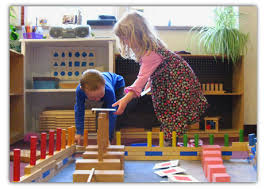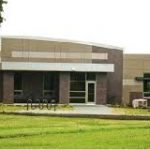In the years around 1900, Dr. Maria Montessori worked with preschool and elementary school age students with disabilities and created a method of teaching and learning that would later become called the Montessori Method.
Who was Dr. Maria Montessori?
Dr. Montessori was the first woman to receive a medical degree in Italy. She was born in 1870 and earned her medical degree in 1896. After that, Dr. Montessori worked in the fields of psychiatry and education with an emphasis on children with special needs and disabilities. In 1907, Dr. Montessori was asked to take over the Casa dei Bambini or House of Children in San Lorenzo, a poor neighborhood on the outskirts of Rome. It was there that she implemented with great success what would become the world renowned Montessori Method.
Philosophy of a Montessori Education
Maria Montessori believed that children were different from adults and that children learned best when they were provided with safe and natural environments in which to play. The role of the adults was to keep the environment safe and to keep changing the environment to allow the child to work to his her greatest potential. By learning independently, students educated in Montessori schools gain self confidence and often learn to correct their own mistakes without the help of their teachers.
Montessori Preschools
Perhaps the most fundamental concept that distinguishes a Montessori preschool from preschools that follow other educational philosophies is that Montessori preschools allow preschool students to direct their own learning. The philosophy is that a Montessori preschool should have lots of interesting supplies and activities that are accessible to preschool age children and that the teacher should introduce those supplies and activities and then take herself out of the equation and become more of an observer (and protector) than a hands on teacher. Typically students in Montessori preschool classrooms range in age from age 3 to age 6.
The Montessori classroom has 6 curriculum areas including:
• Practical Life: students learn how to take care of themselves and their environment by learning to dress themselves, clean up after themselves and by taking care of plants and animals, among other things.
• Sensorial: students learn about colors, numbers and more through use of their senses. Specific Montessori supplies are provided to aid students in this regard.
• Cultural: students are provided with materials to learn about different cultures and to develop an appreciation for and interest in different cultures, countries and people around the world.
• Science: science is emphasized heavily in Montessori classrooms. Students can often be seen doing a science experiment to learn a concept.
• Language: preschool students learn the alphabet through hands on activities such as tracing letters and forming words with movable letters.
• Math: math is taught through the use of manipulatives, games and other fun supplies.
Montessori Elementary Schools
Montessori elementary school group students within a three year age range together in a single classroom. This is designed to create an interactive environment and to allow older students to demonstrate what they have learned and to act as teachers for the younger students.
While the Montessori approach to learning is most often discussed with regard to the preschool and elementary school years, Dr. Montessori also had thoughts about how middle and high school students could learn effectively. Dr. Montessori believed that adolescence was a very difficult time for people to be able to learn within the traditional school models.
Instead, Montessori advocated for a break from formal academics. She believed that students of this age could learn best by being close to nature. She advocated for high schools that were set up to be working farms. Students would be responsible for the planning, growing, cultivating, harvesting and distribution of all of the farm produce as well as the transportation, economic and other considerations associated with running a business. She suggested offering several varied courses that students could pursue if they were interested but without pressure.
The Montessori Method provides many benefits to students of between the ages of 3 and 18. Students are encouraged to discover things on their own and to perform experiments under the silent but watchful eye of their teacher.
While Maria Montessori was likely pleased with the success of her Casa dei Bambini experiment, she is unlikely to have known how influential that experiment would become and how popular the Montessori Method would be worldwide over a century later.




Comments
Yolanda Dasilva - July 30, 2019
Looking to work in a school among the children as done an International teacher training diploma- Montessori, Pre-School and Special education Needs for Special children.
EemRTkWva4 - July 31, 2019
kindly register and upload your resume and follow the instruction to apply for any job that seem fit.